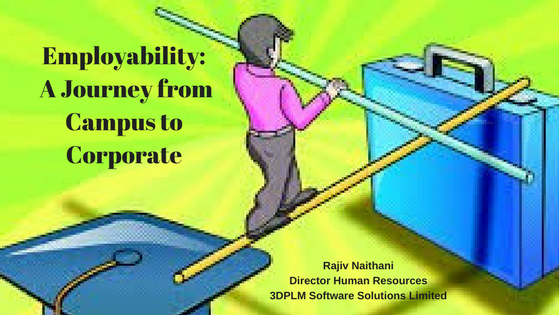
As a HR Professional, I am called upon to participate in Industry-Academia discussions on Employability. It is not immediately clear to me about the number of academic institutions that understand the key difference between employment and employability. Mere gaining of an academic degree does not guarantee an individual being employable. If that were to be so, all graduates would have had a decent shot at jobs across India, whereas the facts are otherwise. Various reports indicate that employability ratios have been at just 25% of the total employable population in India.
The root of the problem is well known to the Industry, Academia and Government. However, despite being aware and efforts being put in, no observable change has been witnessed in the previous decade. I, however, have to admit that the Labs collaboration between industry and academia has borne some positive results.
Employability requires three key ingredients of competency -- Knowledge, Skills and Attitude – knowledge, as you notice is just one component. While academia has been doing a fairly good job on the knowledge front, but the gap is mostly observed in areas of technical skills development including enhancing softskills abilities of the students.
While it is an open question on who should be bridging this gap, in my humble opinion, Academia must take the initiative in partnering with the corporate world in creating a skill-based curriculum. Students are often unaware of the skills they require and the corporate world many times does not have the resources to scout for and train employable candidates from various Universities.
Some of my suggestions for academia to address this gap, are as follows –
While Knowledge and Skills will help students to become employable but without an enabling attitude, the employability would be a short lived experience and hence a lot of focus on “Creating Enabling Attitude” must need to be given. It is the ‘Attitude’ which drives ‘Knowledge’ and ‘Skills’ for each individual. Based on my experiences in different organizations, I have observed certain common pitfalls in student’s behaviors when they come onboard in corporate and hence addressing these will surely help these students in their growth and learning. Some of it are listed below -
The requirement is of two-fold: Accept these issues and start sensitizing and making students aware on these challenges. Secondly, partner with Industry or training partner to bridge this gap. This should help ensure more employable candidates.
The Views Expressed Here Are Personal Of The Author And Not Representative Of The Organization In Any Way.
Profile: Rajiv Naithani is Director Human Resources at 3DPLM Software Solutions Limited.
Publsihed With Permission.